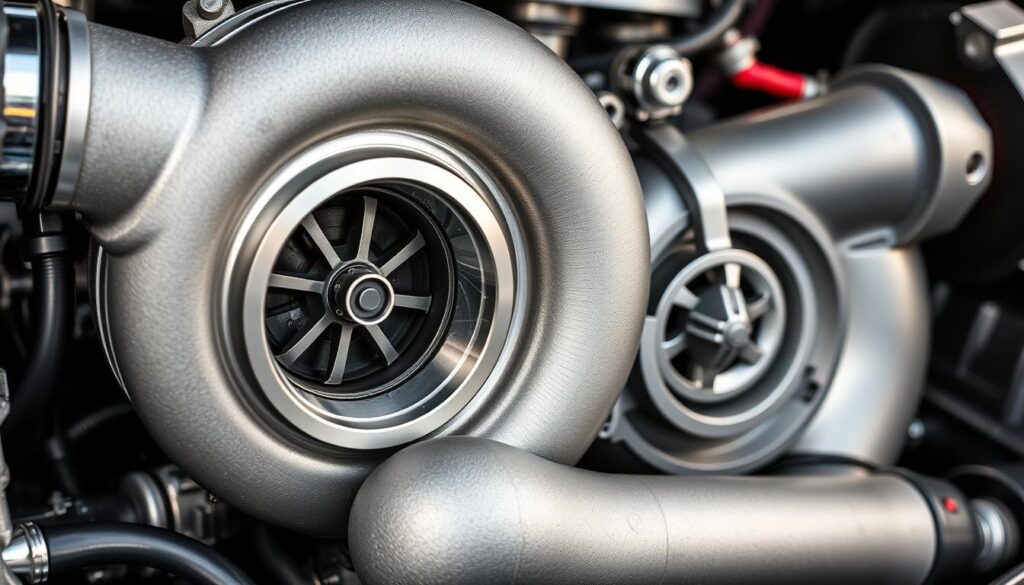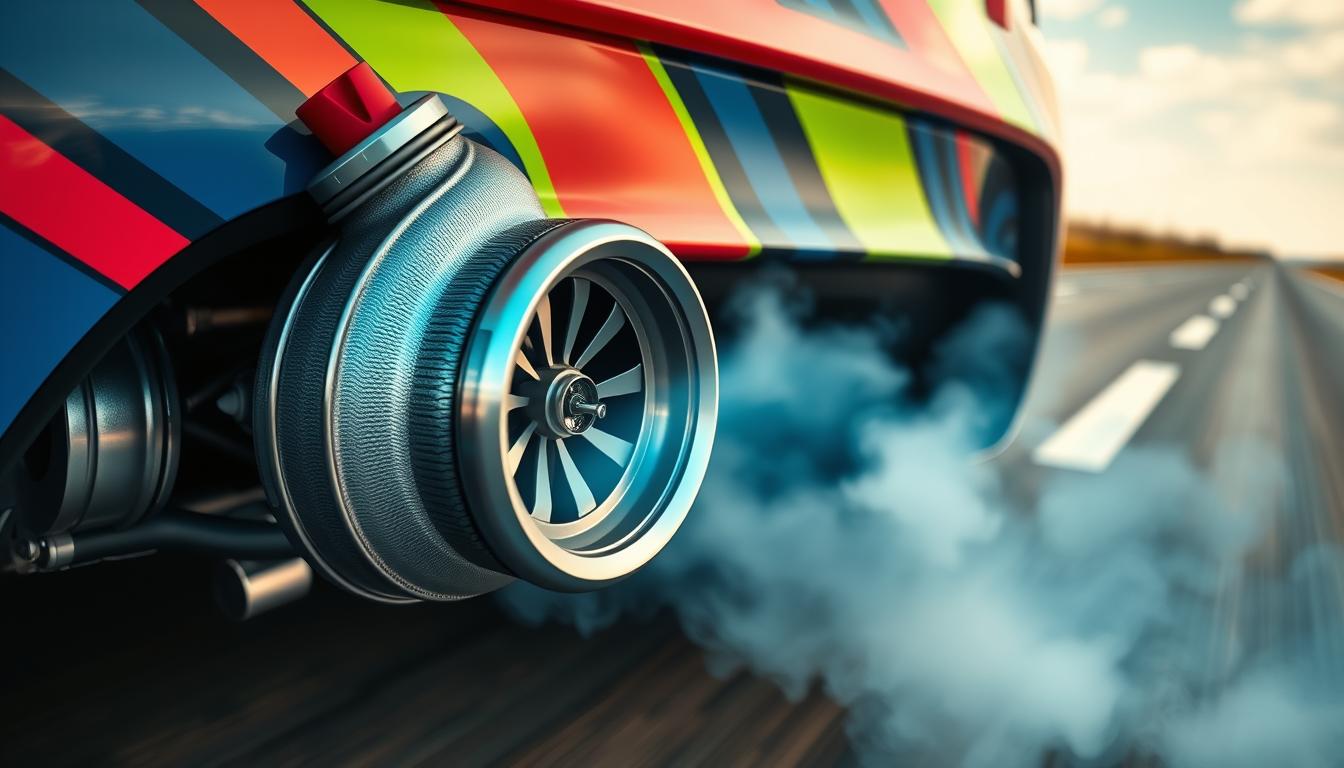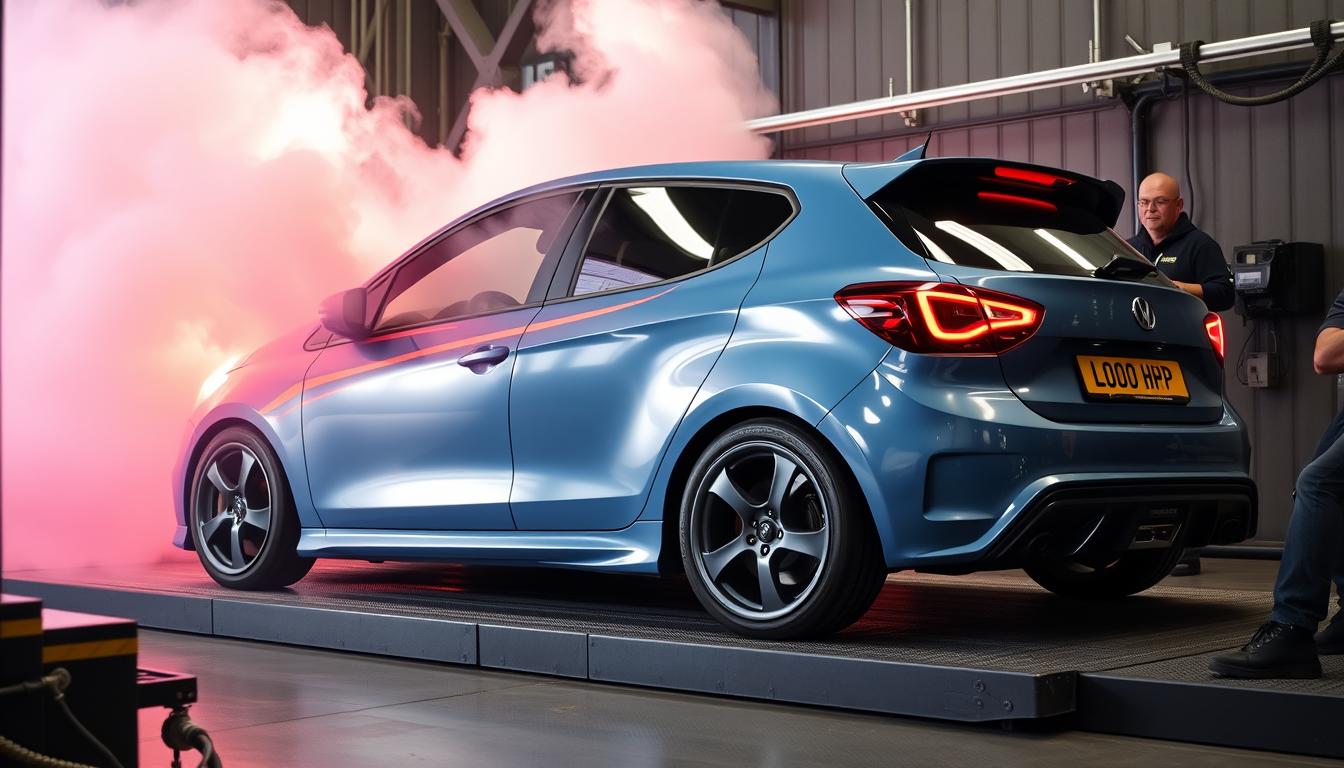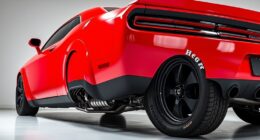Have you ever felt the thrilling rush when accelerating, with the engine roaring beneath you? Turbocharging makes this surge of power more than just a dream. It turns it into reality. Every press of the pedal, with turbo technology, means enhanced performance and power. Your vehicle becomes optimized for speed, efficiency, and strength.
Turbocharging transforms your engine by pushing extra air into the combustion chamber. This unleashes a level of performance beyond what you thought possible. It’s perfect for both winding roads and smooth highways. Turbochargers give you a potent and efficient ride that satisfies your speed need and is eco-friendly.
Key Takeaways
- Turbo technology greatly enhances internal combustion engine efficiency and power output.
- Water-cooled turbochargers contribute to improved performance and longevity.
- Vband connections in turbochargers ensure a secure, leak-free installation and enhanced efficiency.
- Modern turbo systems consist of various components, including turbine, compressor, and intercooler.
- Turbocharging allows for a forced induction system, increasing air and fuel intake for higher power output.
Understanding Turbocharging Technology
Turbocharging is a big leap forward in engine tech. It boosts performance and efficiency dramatically. By using exhaust gases, it makes engines work better, offering a superior drive.
What is a Turbocharger?
A turbocharger compresses air going into the engine. It has a turbine and a compressor. These parts help even small engines act like they’re much bigger. This gives us better gas mileage and more power. For example, Garrett ball bearing turbochargers work 15% quicker than older types, cutting down on delay and making cars more responsive.
How Turbocharging Enhances Engine Performance
Turbocharging raises engine performance by letting more air and fuel into the cylinders. This can increase power by up to 30% over engines without turbo. The design of the turbocharger is key for getting the most from it. Using charge air coolers also boosts air density, which helps prevent engine knock and ensures smooth running.
Tools like blow-off valves and wastegates control the boost pressure. Making sure the turbocharger has good oil and water connections is important for its reliability and life span. As car makers move to use more turbochargers in petrol engines, they aim to meet tough emissions rules while increasing power.
The Components of a Turbocharging System
Exploring turbocharging systems means knowing the parts that boost your vehicle’s speed. Each piece, from the turbine to the intercooler, makes the engine run better. Let’s dive into these important parts.
Key Parts that Make Up a Turbocharger
A turbocharger uses several key parts to up engine power:
- Turbine: This collects exhaust gases to create rotational force. It’s vital for running the compressor.
- Compressor: It ups the air pressure going into the engine. This means better combustion and more power.
- Center Housing/Rotating Assembly (CHRA): It connects turbine and compressor, provides lubrication, and supports the build.
- Wastegate: It controls exhaust gas flow, helping manage boost pressure and protect the engine.
Picking the right turbine size is key. Too small, and it chokes the engine, killing power. Good piping design and maintenance matter too, as material choice and pressure balance are huge for performance.
The Role of the Intercooler in Turbocharging
The intercooler is huge in turbo systems. It cools the air before it gets to the engine. Cooler air means more power. A well-set intercooler keeps air temp right, so the engine runs best.

Think about how each turbo part works together. The system’s power comes from how well these parts fit and work as one.
| Component | Function | Material |
|---|---|---|
| Turbine | Collects exhaust gas | High-strength alloys |
| Compressor | Increases intake air pressure | Aluminum alloys or titanium for extreme conditions |
| Center Housing/Rotating Assembly | Supports lubrication and connection | Aluminum or cast iron |
| Wastegate | Regulates exhaust flow | Stainless steel |
| Intercooler | Cools compressed air | Aluminum or plastic |
Knowing the role of each part in your turbo system helps you take care of it. And you can fully tap into its power.
Benefits of Turbocharging Your Engine
Turbocharging technology offers amazing benefits. It improves vehicle performance, fuel efficiency, and reduces emissions. Knowing these advantages shows the value they add to engines today. There are also new advancements in turbocharging technology that allow for a more efficient and precise delivery of air to the engine, enhancing performance even further. This natural racing boost method provides the power needed for acceleration without sacrificing fuel efficiency. As technology continues to evolve, we can expect even more improvements in turbocharging for vehicles in the future.
Increased Power Output and Efficiency
Turbocharging helps engines produce more power from the same size. It boosts horsepower by using exhaust gases. This makes engines more fuel-efficient. However, some cars like the Ford Fusion 2.0L Turbo might use more fuel.
Overall, turbocharging enhances performance. It allows smaller engines to perform like bigger ones. For example, a V6 could replace a V8, or a four-cylinder could match a V6’s power.
Environmental Benefits of Turbocharging
Turbo engines are cleaner for the environment. They burn fuel more cleanly. But, some might not be as fuel-efficient as expected and use more fuel. Still, many turbocharged cars help reduce pollution.
The VW XL1 turbo diesel hybrid is a great example. It’s both powerful and eco-friendly. Turbocharging is key in achieving tough environmental goals.

Types of Turbochargers Available
There are a few kinds of turbochargers you should know about. Two main types are water-cooled and traditional turbochargers. Water-cooled ones use coolant, helping them stay cool during tough conditions. This makes them great for powerful cars that push their limits. On the other hand, traditional turbochargers use oil for cooling. They do a good job but might not handle extreme situations as well. Knowing the difference between the two helps you choose what’s best for your car’s needs.
Water-Cooled Turbochargers vs. Traditional Turbochargers
Variable Geometry Turbocharger (VGT) is another cool tech in turbocharging. It changes its A/R ratio based on how fast you’re going. This means you get a smooth and strong power no matter the speed. VGTs are awesome because they cut down on turbo lag, making your ride smoother. They’re often found in luxury cars and high-performance engines. However, VGTs can be complex and pricey, which could be a downside for some.
Understanding Vband Turbo Technologies
Vband connections are also key in turbocharging technology today. They make putting in and taking out the turbocharger much easier. This is super handy for cars that race or need frequent maintenance. Using Vband means a tighter fit and less worry about leaks. It’s good for making sure your car runs smoothly and lasts longer. Remembering these turbocharger types and what they do can help you make smart choices for your vehicle.










